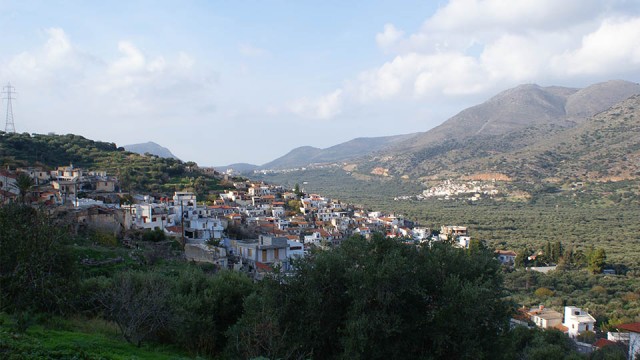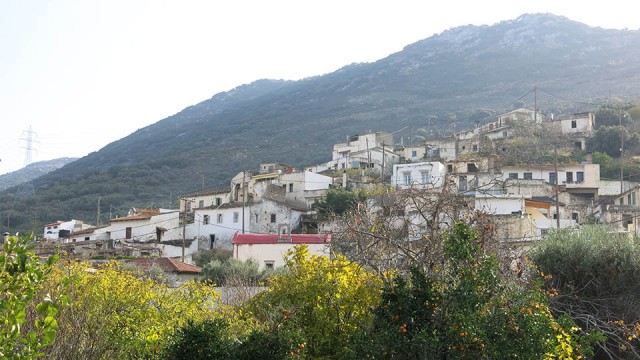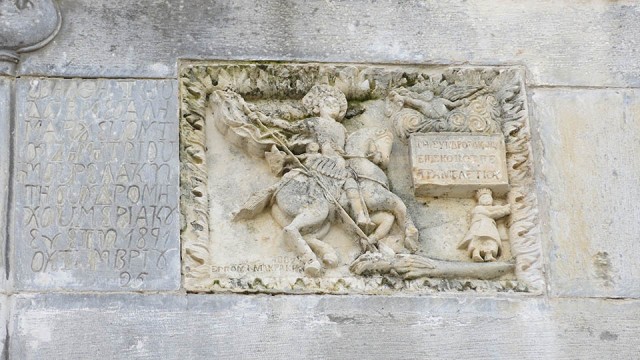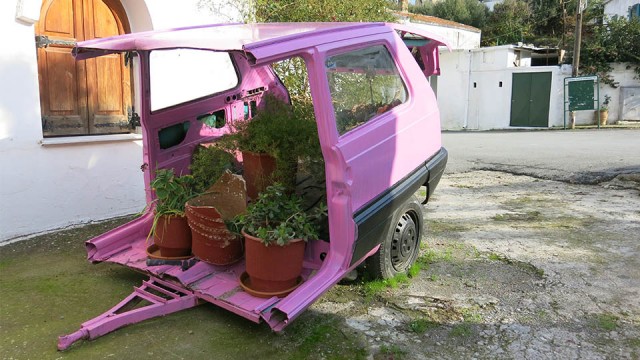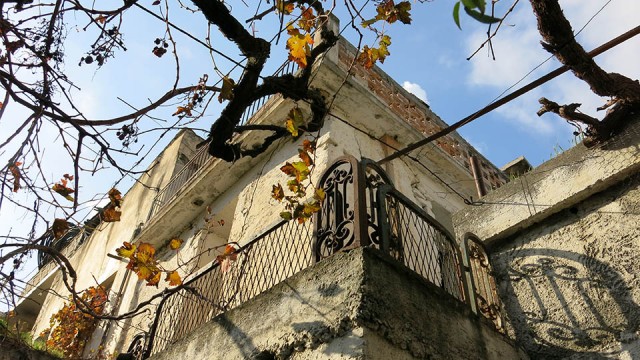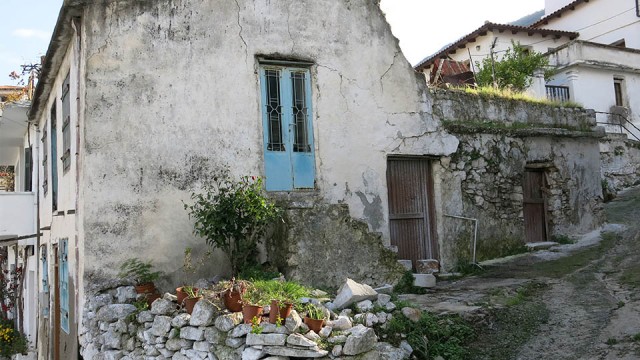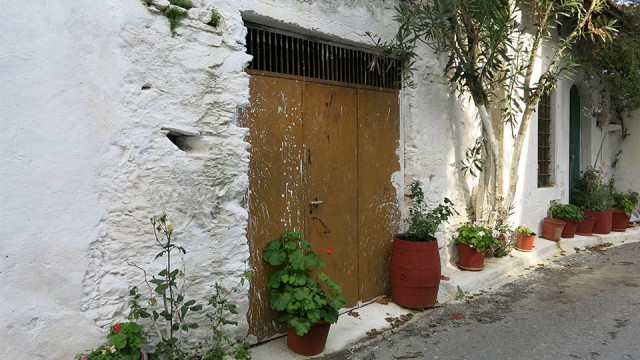Choumeriako is visible from the national road to Agios Nikolaos, near Neapoli. Perched at the foot of Mount Katsomatos and built over the top of three hills, the village shapes an anaglyph 'crown' that becomes even more impressive when you see it at nighttime from afar. It is one of the villages worth a detour off the national road; drive to Neapoli and take the provincial road that crosses the olive groves of Merambello valley for a stroll to its narrow lanes and monuments.
Even though Choumeriako is now relatively unknown, once upon a time it was the center of the region. Back in Venetian times it was the eparchy's 3rd village in population (after Kritsa and Neapoli) and the base of three notaries. But even fifty years ago, the village was full of life. As its inhabitants proudly told us, Choumeriako had over 15 coffee shops (almost as many as its churches) and a 'commercial center' with five butcher shops, tailors, grocery stores, shoe makers and more.
Today you can see traces of its past glory on faded handmade signs you randomly meet as you walk through the lanes, looking for the 17 very old churches of the village, as well as its fountains and other monuments. The fountains have names: magatzes, the fountain of Agios Georgios (built in 1887) and Pigaidouli.

The village has maintained the characteristic architecture of Lassithi with the care of its inhabitants. We observed that villagers have divided the settlement into 'zones of responsibility', cleaning and decorating the streets with flowers and colorful pots. Their love for the village has impressed us even more than the monuments! The cultural association organizes many events, including the great traditional feast of Agios Panteleimonas. The association also plans to record and map the most beautiful routes in and around the village for visitors - another reason to come back here soon!
Romana Portela
Romana Portela is one of the Venetian monuments recorded by Gerola but few people today are aware of its existence. This impressive arched gate once led to a Venetian palazzo (city-style habitation) of the 16th – 17th century. Venetian architecture, Ottoman renovations and an always present abandonment and neglect. However, behind these deserted walls and the destructive effects of time hides an old story, that touches the limits of myth…

Romana Portela was included in the photographic collection of Gerola, recording the Venetian monuments of Crete. Here, the story of brave Rodanthi who killed Hoursit Pasha was written...
During Ottoman times here ruled Hoursit Pasha, who married – by force- Rodanthi, a girl from the village of Kritsa. The story - as the villagers narrated it to us- goes like this: one night Rodanthi fooled the Pasha and managed to strip him from his weapons and later slaughtered him in his sleep. Then she ran away to the mountains and joined a rebel group, fighting the Turks. Since that day, they say, a man cannot stay in the old palazzo for long. At least we hope the monument will be restored in order to stay around for long…
Panagia Koumpelina
Even if you don't have enought time to discover all nineteen churches of the village, make sure you at least visit Panagia Koumpelina. Its main part dates back to the 11th-12th century, but the splint was added later, during Venetian times (16th century). Koumpelina is the only cruciform church with a dome in Eastern Crete and has many common elements with monuments of Istanbul. Fortunately, at least this monument has been restored recently. Every year on July 26 the great feast of Agios Panteleiomonas takes place in the square right in front of Koumpelina with live music, dances and traditional dishes. See you there ;-)



